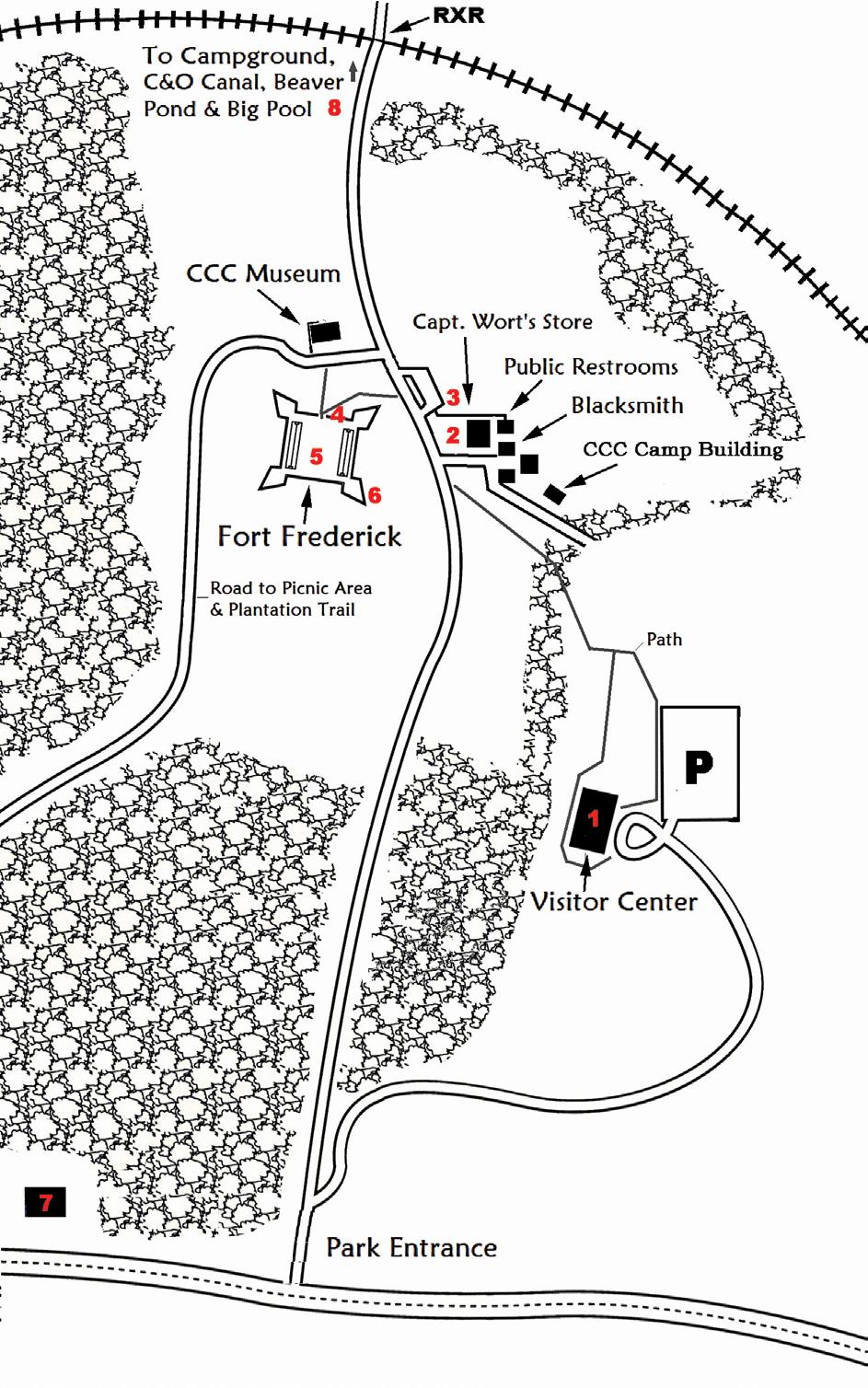
4 minute read
Williams Family - African-American Heritage Walking Tour
From 1860 until 1911, the fort was owned by the Nathan Williams family. The Williamses were free African-Americans. The family had been held as slaves until Nathan’s father, Samuel, purchased the family’s freedom in 1826. By 1847, Nathan would purchase his wife, Ammy from bondage. The Williamses made a prosperous farm on the site. In 1876, Nathan was named trustee of “Fort Frederick Colored School,” which operated off and on until 1909. Two of Nathan’s children served as teachers for the school. 1. Visitors’ Center and Kiosk ~ At the visitors’ center, watch an orientation movie about the fort‘s history and view an exhibit about the Williams family. The kiosk located in the parking lot features historical information on the fort and the Williams family.
The visitors’ center is near the site of the Charles Williams farm.
Advertisement
Charles was Nathan William’s son and a school teacher. 2. First House Site & Civil War Trails Markers ~ From about 1857 to 1909, the Williams family resided on this site. The restored foundation might be from the kitchen of the house.
According to period sources, the house was considered a
“mansion.” A period image of the house contradicts that sentiment as the house appears to have had two stories, no porch, and no more than six rooms. The house was destroyed by fire in 1909. During the Civil War, Union officers occupied the house for their quarters, and Ammy Williams cooked for them. 3. Second House Site ~ On this site stood the second home built by the Williams family. It was built in 1909 and was raised by the Civilian Conservation Corp in 1934. It was a two-story frame house with a wrap-around porch and had four to eight rooms. 4. Cannon Hole ~ According to Nathan Williams, Union soldiers knocked a hole in the wall in 1861, to fire a cannon through at
Confederates across the Potomac River in Virginia. Historical documentation places Union artillery at the fort in 1861 and 1862. In 1931, the Daughters of the American Revolution placed a Confederate Civil War cannon at the hole, it is currently displayed in the Visitors’ Center. 5. Fort Interior ~ Williams took advantage of the ruined walls of the fort and used the area inside for many purposes, including a pig sty, orchard and vineyard. 6. Northwest Bastion / Bank Barn ~ Around 1860, Nathan
Williams dismantled the northwest bastion and built a bank barn here, recycling a lot of the wall’s stone in its construction. 7. “Fort Frederick School for Colored’s” ~ In 1876, Nathan
Williams was named trustee of the “Fort Frederick School for Colored’s.” This school was the second school built in
Washington County for the education of African-American children. The school appears to have been in several buildings and locations, including Charles Williams’ house before the current building was built. The school consisted of three rooms, one classroom and two offices or closets. It has been altered several times during its life span. This building was built about 1899 and used as a school periodically until 1909. Two of
Nathan Williams’ children, Charles and Betty, were teachers at this school. The school building was sold by the county in 1914 and became a private residence. 8. Other Points of interest: Western Maryland Railroad ~ This railroad crossing is part of the former Western Maryland Railroad, and is an active spur line for CSX today. The Western Maryland Railroad began construction in 1852 but did not reach Big Pool until 1882. It offered passenger and freight service and was an economic catalyst for local farmers. C&O Canal ~ Construction began in 1828. By 1852, it was completed from Georgetown to Cumberland, Md. Some of the laborers used to build the canal were enslaved people. Tradition states it was part of the Underground Railroad. The canal opened up commerce, trade and travel both east and west. This was accomplished by overcoming the mountains with a series of locks which raised and lowered canal boats. The Williams’ family would have been intimately familiar with the canal workers and using the canal as a source of trade. Potomac River ~ The river was the original source of trade and travel for early settlers. By the 1800s, it was an obstacle to be overcome for north/south trade. Ferries were established along the river; the closest being at McCoy’s Ferry and Cherry Run. During the Civil War, the river would be the dividing line between two nations and the front line of that war. Nathan Williams, a Virginian by birth, knew and traded with people who lived in Virginia. He did not let the war stop him. He would take goods and cross the river with his wagon and trade with soldiers and civilians in the Confederacy. Upon his return to Maryland, he would give information to Union soldiers stationed around Fort Frederick.










